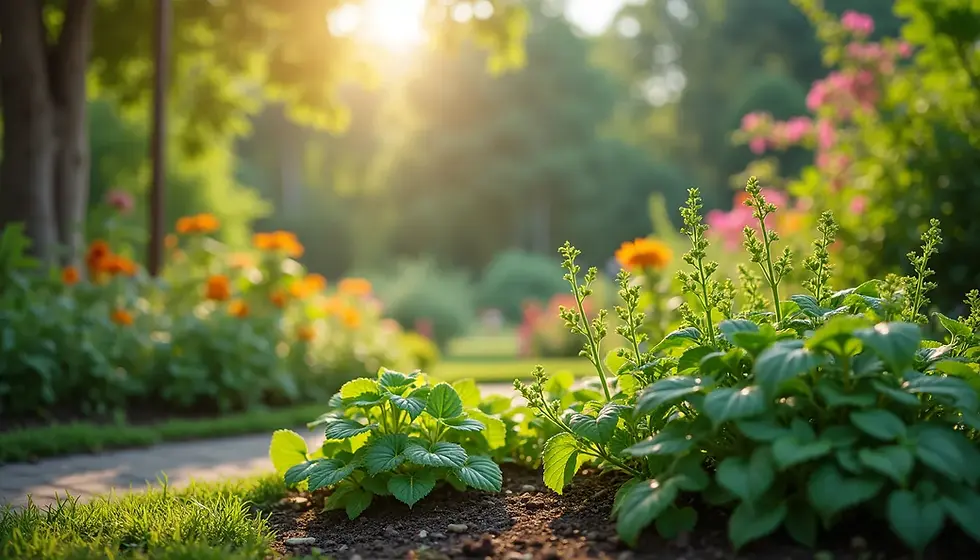Power Washing the House Damaged My Plants: What Went Wrong and How to Avoid It
- Mei-Lin Arora

- Sep 6
- 3 min read
Updated: Sep 7
If you’ve ever thought, “I tried cleaning the siding and now power washing the house damaged my plants,” you’re not alone. Power washing is great for blasting away dirt, mildew, and stains, but the high pressure—and sometimes the detergents—can cause unintended damage to your landscaping. From broken stems to wilting leaves, the aftermath can be frustrating. This guide explains what went wrong, how to prevent it, and what else homeowners should watch out for when using a power washer.

Why power washing damages plants
There are two main culprits when plants suffer during a power wash:
Pressure damage – A jet of water strong enough to strip paint can also snap fragile stems, shred leaves, and uproot shallow-rooted plants.
Chemical runoff – Many power washing detergents contain surfactants or bleach that harm plant tissue and soil quality.
The Environmental Protection Agency (EPA) notes that runoff containing cleaning chemicals can contaminate soil and harm plants if not properly managed.
Think of your plants like tissue paper: even if you don’t aim directly at them, the splashback can be enough to cause damage.
Other risks beyond plants
Power washing can damage more than just your landscaping if you’re not careful:
Power washer damage to concrete – Too much pressure can etch or pit your driveway and sidewalks.
Damaged seals – Windows and doors may leak if the washer loosens seals.
Power washing brick home – Excess pressure can erode mortar joints and force water into walls.
Power washing heritage house – Historic homes often have fragile wood, brick, or stonework that can be permanently scarred.
Power washing weeds – While it may rip them out temporarily, it often just spreads seeds around.
According to This Old House, most DIY power washer mistakes happen when homeowners underestimate the force of the spray or skip protective prep.

Power Washing the House Damaged My Plants : How to prevent it next time
1. Cover and protect
Use tarps or plastic sheeting to cover shrubs, flowers, and garden beds.
Water plants thoroughly before power washing—wet leaves and soil dilute chemical absorption.
2. Choose the right detergent
Pick plant-safe cleaners or skip detergent altogether when possible.
Avoid bleach-based solutions unless absolutely necessary.
3. Control your spray
Use a wider nozzle angle (25–40 degrees) for siding.
Keep at least 6–12 inches away from the surface.
Work at lower PSI (1,200–1,800) when cleaning near sensitive areas.
4. Wash smart
Always rinse plants after power washing to remove any chemical residue.
Consider professional services for fragile surfaces like heritage homes or brickwork.
Pro tip: If you’re worried about splashback, install temporary plywood barriers around flowerbeds closest to the house.

FAQ
Why did power washing the house damage my plants?
Because high water pressure and cleaning chemicals injured leaves, stems, and soil health.
How can I prevent power washer damage to concrete?
Use the right nozzle and keep the spray moving to avoid etching.
Is power washing a brick home safe?
Yes, but only at low pressure and with the right technique. Too much force erodes mortar.
What about power washing weeds—does it work?
It can rip them out, but often spreads seeds instead of eliminating them.
Is it safe to power wash a heritage house?
Generally no—historic materials are too fragile for modern high-pressure systems.
Final verdict: use power wisely
If you’ve ever thought “power washing the house damaged my plants”, you now know why it happened. The combination of high pressure and harsh chemicals makes landscaping vulnerable. Protecting your plants, adjusting settings, and using the right cleaning solutions can keep your home looking sharp without sacrificing your garden 🌿🏡.



Comments